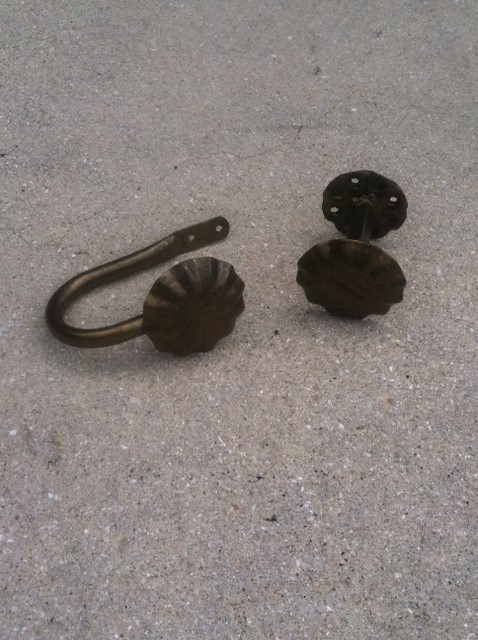Metropolis Iron Releases New Line of Ruffled Drapery Medallions
Iron Home Décor Designer, Metropolis Iron, has released a new line of ruffled drapery medallions. These new medallions offer designers a drapery hardware option which

Window treatments, if created correctly, can bring life to even the drabbest of spaces. While a beginner DIY home designer may be happy with a curtain that coordinates with a rooms decor on a fashionable rod, professional interior designers strive to create unique window treatments that include decorative hardware such as drapery medallions which are commonly called drapery rosettes or drapery holdbacks.
Drapery medallions perform a variety of functions in creating an attractive window treatment for your home. A drapery rosettes main function is to hold back or tie back the curtain panel. Medallions are also commonly used to hang curtains or swags in small or awkward areas that will not allow for a traditional curtain rod to be hung.
Drapery rosettes date back to the mid Victorian era (1850-1870). They were originally created as a “curtain pin” or holdback. The first drapery medallions had large heads and thick stalks and were used more for functionality than decoration. By the late Victorian age (1870-1900) window treatments began to grow more elaborate and the drapery medallion began to evolve from a tool to a decoration. In these early days of drapery medallions, tiebacks were generally created in brass and a handful of designs including scrollwork or floral.
Since their creation the selection of drapery medallions available has grown greatly. Medallions are generally created in a variety of designs from simplistic to ornate which allow for integration into any type of design plan. In addition to design selection, medallions come in an array of shapes and sizes. Metropolis Iron provides a vast selection of drapery medallions along with custom designed, one of a kind drapery holdbacks.

Iron Home Décor Designer, Metropolis Iron, has released a new line of ruffled drapery medallions. These new medallions offer designers a drapery hardware option which
As the name suggests, holdbacks decoratively hold curtains back to let the light in, giving you a light-filled, elegant look for your room. Installing curtain

Curtain holdbacks are an important feature of any complete window treatment design. A good curtain tie back should not only be functional as to tie
If you aren’t very skilled in the world of drapery hardware vocabulary, creating the perfect window treatment can be a difficult task. Knowing what the item is
When it comes to decorating, choosing curtains can be an exciting way to add a personal touch to the rooms in your home. But, what
We’re known for our exceptional customer service and we would be happy to help!

